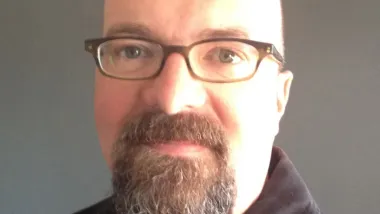I'm writing from Cambridge, where the Lincoln Institute of Land Policy and the Harvard Graduate School of Design are hosting their annual shindig for a small crew of journalists crazy enough to have urban issues as their beat.
I'm writing from Cambridge, where the Lincoln Institute of Land Policy and the Harvard Graduate School of Design are hosting their annual shindig for a small crew of journalists crazy enough to have urban issues as their beat.
Last year, the focus was decidedly on the journalists themselves. The newspaper business was falling apart, and the future was uncertain. This year, TIME magazine editor Rick Tetzeli set the slightly more optimistic tone for journalism in summarizing his magazine's bold move to plant a reporter in a house in Detroit. "The world of unemployed journalists is an untapped resource," he said. "The big media company is more and more of an anachronism." Tetzeli, with all of his big media clout, saw that the blog they set up for the project told a more interesting, consistent narrative than the stream of articles in TIME's many magazine properties.
Instead of navel-gazing, this year is focused on giving journalists the inspiration and high-level exposure to really dig in to stories about cities and urban planning. Andrés Duany kicked off the day with his usual bravado and razor-sharp analysis. Duany never ceases to amaze with his balance of real-world architecture and planning experience and next-generation thinking. Realizing that the projects he's planning today won't be built for another 5-10 years, he's already imagining they'll need to be ready for possible post-peak oil and global warming conditions. He's got a book coming out on agrarian urbanism in the next couple of months which should be fascinating. "It's not just one thing, it could be THE thing," says Duany. I'm dying to find out (more on Duany's provocative presentation on Monday).
But perhaps no one exemplifies the idea of "The Reinvented City" more then economist Paul Romer, who was the keynote speaker at tonight's dinner. Romer's "Charter City" concept is a dream that is so out there it is highly probable. In a nutshell, Romer is pitching places in the world with unused, unwanted land on creating a city framework outside their jurisdiction.The new "city" would be run remotely, using the Hong Kong model, and the citizens would be invited from all the poor areas of the world to come there and work. Sort of Sweatshop City, without the nationalism. Ingenious, and a little scary. 'Cities are the right interface for experimentation," says Romer. I couldn't agree more.
"The Reinvented City" continues tomorrow, and Mary Newsom (@marynewsom) and I are twittering up a storm. Follow me on Twitter at @halbur, or search hashtag #lincinst.

Analysis: Cybertruck Fatality Rate Far Exceeds That of Ford Pinto
The Tesla Cybertruck was recalled seven times last year.

National Parks Layoffs Will Cause Communities to Lose Billions
Thousands of essential park workers were laid off this week, just before the busy spring break season.

Retro-silient?: America’s First “Eco-burb,” The Woodlands Turns 50
A master-planned community north of Houston offers lessons on green infrastructure and resilient design, but falls short of its founder’s lofty affordability and walkability goals.

Test News Post 1
This is a summary

Analysis: Cybertruck Fatality Rate Far Exceeds That of Ford Pinto
The Tesla Cybertruck was recalled seven times last year.

Test News Headline 46
Test for the image on the front page.
Urban Design for Planners 1: Software Tools
This six-course series explores essential urban design concepts using open source software and equips planners with the tools they need to participate fully in the urban design process.
Planning for Universal Design
Learn the tools for implementing Universal Design in planning regulations.
EMC Planning Group, Inc.
Planetizen
Planetizen
Mpact (formerly Rail~Volution)
Great Falls Development Authority, Inc.
HUDs Office of Policy Development and Research
NYU Wagner Graduate School of Public Service


























